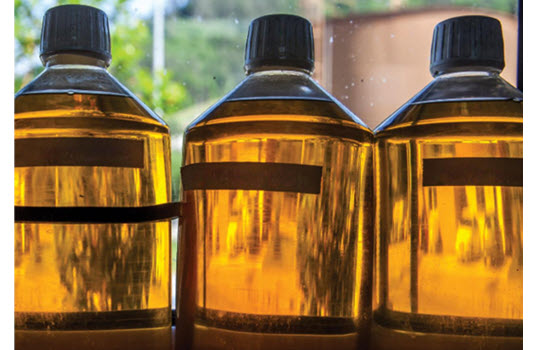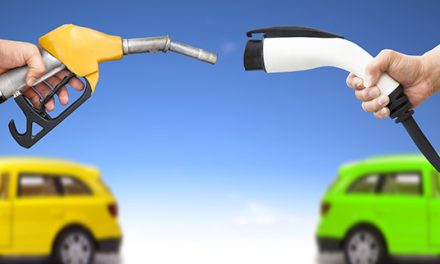It’s time to refocus on fuel supply vulnerabilities, environmental policies and contingencies.
By Joe O’Brien
If ever there was a bigger picture that is difficult to bring into focus, that picture is the United States renewable fuel program.
In its current form, the Renewable Fuel Standard significantly influences the composition of the U.S. motor fuel supply by mandating renewable fuel volume obligations. The program teeters on a combination of greenhouse gas emission reduction goals, consumer demand, automotive technology, agricultural market conditions, regional fueling capabilities and federal oversight, which oscillates with the political leanings of the administration in office at the time.
That notwithstanding, because such a critical resource rests in the balance, care must be taken to advance a fuel/energy program that is as thoughtful in its implementation as it is ambitious in its efforts to reduce carbon emissions. With the Environmental Protection Agency set to review the RFS program for 2022 amid continued efforts to set biofuel volume requirements for 2023 and beyond, now is a judicious time to take a step back and reconsider the dynamics at work to bring the bigger picture back into focus.
Vulnerabilities to Address
The eventual depletion of global oil reserves isn’t the only fuel supply vulnerability facing the United States. If you accept that climate change is plausible, then you must also consider how changes to the environment could affect fuel production. Conditions for growing feedstocks used in biofuels could diminish production capabilities. Extreme weather conditions may test the reliability of refining infrastructure. And it’s not just unstable weather conditions the fuel industry needs to be concerned about—digital threats also persist. The Colonial Pipeline cyberattack that shut down the largest fuel pipeline in the U.S. illustrated what’s at stake. And while the breach demonstrated susceptibility in the petroleum sector, it is by no means the only critical energy source that is susceptible to a hack.
These types of vulnerabilities have the potential to compromise the supply of fuel for large regions of the country. This is an extremely important consideration because the United States may be moving toward a hub-and-spoke model of fuel distribution. This distribution model will maximize economically viable energy sources that are available in geographical areas. For example, electric vehicle charging is likely to expand where wind farms and solar energy support the electrical grid. However, if there was a catastrophic failure of the electrical grid in those regions, supply challenges could cripple a region dependent on that form of transportation.
Environmental Policy Approaches
Some of the discussion about new policies to reduce greenhouse gases centers around low-carbon fuel standards, such as those adopted by California, Oregon and Washington. Minnesota is considering a standard that would require a 20% reduction in the “aggregate carbon intensity” of transportation fuel supplied to the state by the end of 2035.
The Minnesota intensity measure factors in pollution beyond tailpipe emissions. For instance, pollution resulting from electricity generation for EVs or producing crops for biofuels also would be counted. Under the Minnesota bill, each supplier of fuel, whether that be ethanol, gasoline, electricity or natural gas, would be assigned a score representing the life-cycle greenhouse gas output of their product. The Minnesota standard would also craft a cap-and-trade system for accountability similar to the EPA’s Renewable Identification Numbers (RINs). Suppliers who meet pollution standards would earn credits, and those who don’t would need to buy credits to make up the deficit.
Contingency Planning
Minnesota’s proposed approach to reducing carbon emissions would seem to level the playing field among alternative energy sources vying for market position. A level of diversification is also important to energy security, but left unguided, the diversity may not be enough to substantially mitigate the effects of a widespread regional fuel supply failure. For example, let’s say the Midwest light-duty vehicle fleet becomes fueled by 50% ethanol blends, 30% biodiesel, 10% EV, 5% CNG and 5% hydrogen fuel cells. If 50% of the vehicles rely on ethanol blends alone and the ethanol supply is jeopardized, more than half of the Midwestern vehicle fleet is vulnerable to a fuel shortage.
Many people view hybrid vehicles as a steppingstone to a vehicle fleet 100% powered by an alternative energy source designed to lower greenhouse gases. However, this viewpoint may be short-sighted, failing to recognize the value hybrids could bring toward developing a U.S. vehicle fleet—and energy supply—that enables consumers to pivot amid challenging supply conditions. Just as renewable fuels didn’t expand based on consumer demand alone, the adoption of a hybrid fleet would require substantive policy support. The resiliency of the nation’s fuel supply may depend on it.
Note: At the time of this writing, the EPA had proposed extending RFS obligations for 2019-21 and for 2022 and beyond.
 Joe O’Brien is vice president of marketing at Source™ North America Corporation. Contact him at [email protected] or visit sourcena.com to learn more.
Joe O’Brien is vice president of marketing at Source™ North America Corporation. Contact him at [email protected] or visit sourcena.com to learn more.









